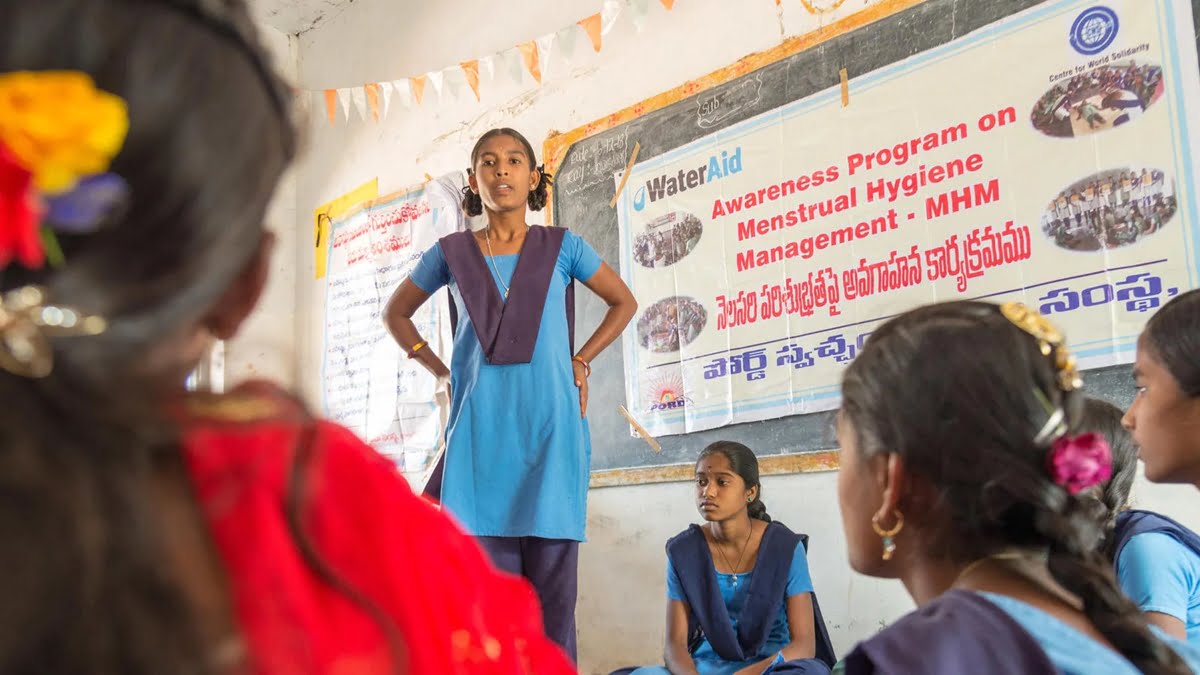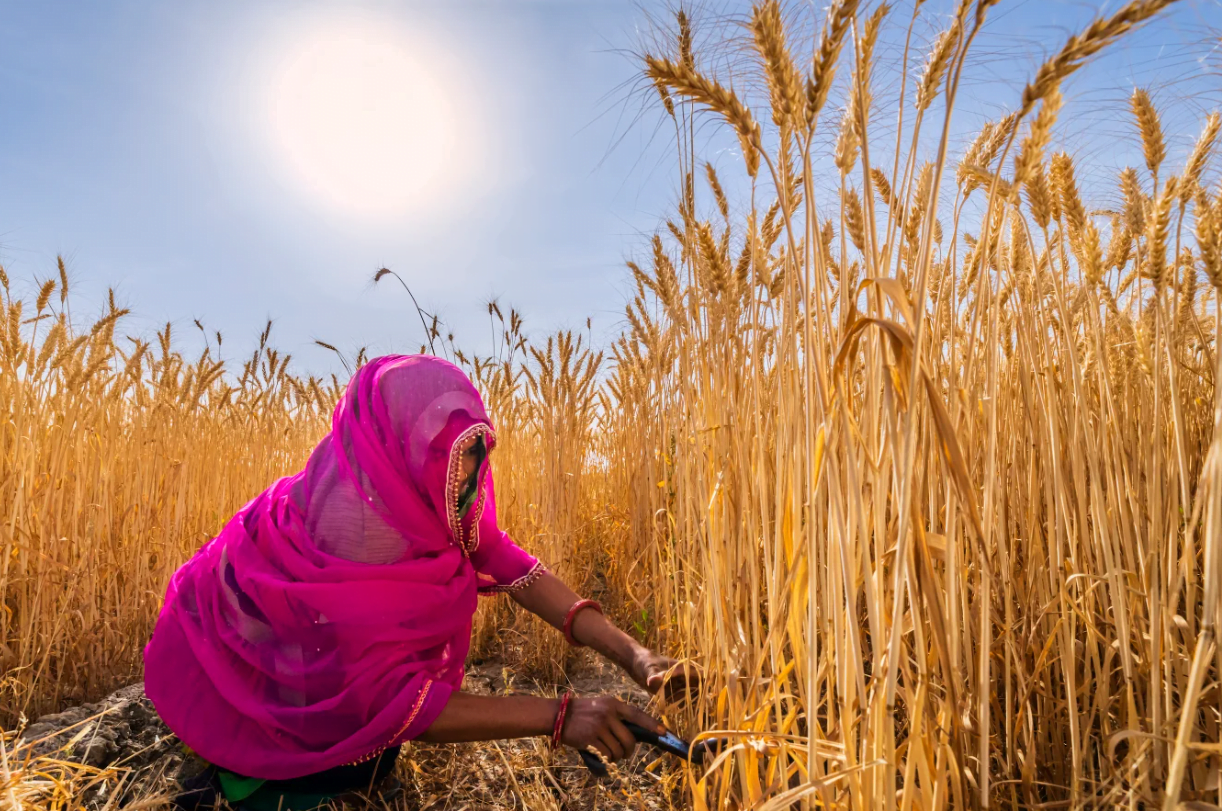Posted by Karan Babbar
India has been pushing for gender equality in the education system. Every child deserves to reach their full potential, but gender inequalities in their lives and in the lives of those who care for them hinder this reality. Gender inequality affects the lives of all genders, however, statistically, girls are more disadvantaged. Lack of emphasis on and awareness about menstruation and menstrual hygiene management (MHM), poverty, customs, substandard school structure, brutality, and outrage among peers, vulnerability are among the multiple factors which contribute to the gender differences in enrollment and the attendance rates.
Previous studies have shown that the physical environment of schools does not adequately support the needs of girls to manage their menstrual days, and does not provide strong social and emotional support. As a part of this article, we try to understand the importance levied by the government on menstrual hygiene management in the recently released National Education Policy (NEP).
Also read: Why We Must Be Critical Of The New Education Policy 2020
Previous studies have shown that the physical environment of schools does not adequately support the needs of girls to manage their menstrual days, and does not provide strong social and emotional support. As a part of this article, we try to understand the importance levied by the government on menstruation in the recently released National Education Policy (NEP).
One of the understated areas is to understand how schools can provide the social and physical environment to support the transition of girls through the adolescent phase. Boys and girls have different experiences of puberty; post-puberty girls need to manage menstrual blood every month. Most of the schools assume menstrual hygiene management (MHM) to be implicit in their Water, Sanitation and Hygiene (WASH) strategies.
The purpose of this article is to understand the attention paid to menstrual hygiene and menstrual management needs through an analysis of the recently released NEP 2020. We try to check the policy coverage by checking the inclusion of language and keywords used in the policy document (such as Menstruation, MHM, WASH, etc.), which will include different aspects of menstrual hygiene management. With the launch of new SDGs, Goal 4 integrates genders into policies, teacher education, and a comprehensive educational environment. Thus, it is essential to understand the attention paid to MHM in the NEP, which can be considered as a reflection of the government’s concern about the cause.
Also read: How Difficult Is Menstrual Hygiene Management For Women Workers In Indian Textile Industry
This article aims to understand two questions (a) to what extent does education policy recognise the menstrual needs of adolescent girls and (b) does this recognition go beyond the WASH facilities and include menstrual items, menstrual hygiene education programs, sensitisation programs for teaching, non-teaching staff and boys in school?

This article aims to understand two questions (a) to what extent does education policy recognise the menstrual needs of adolescent girls and (b) does this recognition go beyond the WASH facilities and include menstrual items, menstrual hygiene education programs, sensitisation programs for teaching, non-teaching staff and boys in school? The analysis was conducted by checking the gender-related keywords to understand the policy approach towards gender sensitization. Similarly, menstruation-related and sanitation-related keywords were used to the acknowledgment of the policy document to the menstrual-related and WASH-related strategy as shown in Table 1.
| Gender- Related | Range | Menstruation-Related | Range | Sanitation-Related | Range | ||
| Girl | 8 | Menstruation | 0 | Hygiene | 2 | ||
| Gender | 12 | MHM | 0 | Sanitation | 5 | ||
| Women | 6 | Puberty | 0 | Toilet/Latrine | 3 | ||
| Female | 7 | Pads | 0 | Water | 6 |
NEP 2020 doesn’t recognise or include the menstruation-related keywords in the policy document. Neither do they pay attention to any of the proxies of menstruation, including puberty, MHM, or sanitary pads, which reflects the misplaced priorities of the government.
We further checked the gender-related keywords in the policy document. The word “girl” has been used eight times in the policy document. However, it is mostly used (a) to show the girl child as an underrepresented group (b) to provide them a quality education. Similarly, the word “women” and “female” have been used to show them in a vulnerable position. The policy document talks about starting a gender sensitisation program for teachers, which will focus on how to teach students with disabilities. However, it doesn’t speak about explicitly taking care of the needs of girl students in the class, especially menstrual hygiene management. It doesn’t even talk about sensitising the non-teaching staff about the unique needs of girl students. The policy also talks about starting a gender inclusion fund and merely mentions about providing quality education to girls and transgender students but does not talk about the usage of this fund to manage their unique needs for menstruation.
However, it includes sanitation-related keywords, including toilet, water, sanitation, and hygiene. It includes the word “toilet” and “sanitation” and associates it with the provisioning of sanitation and clean working toilets. These findings suggest that usage of the word “toilet” and “sanitation” are a mere reflection of the needs for school infrastructure rather than focusing on the psychological needs of the female students. Another critical component for menstrual management, along with the provision of sanitation facilities, is the word “water.” It includes the provisioning of clean water for drinking for all individuals. However, it does not mention the usage of clean water by the girls and female teachers in the school to manage menstruation.
Also read: National Period Day: Make Menstrual Hygiene An Active Concern In Health Manifestos
The policy lacks to talk about providing (a) adequate menstrual supply including sanitary pads every month (b) private place to rest in case of cramps (c) accurate and adequate information about menstruation and how to manage their menstrual hygiene and needs.
The policy lacks to talk about providing (a) adequate menstrual supply including sanitary pads every month (b) private place to rest in case of cramps (c) accurate and adequate information about menstruation and how to manage their menstrual needs. It also fails to talk about a comprehensive puberty education program including both boys and girls with equal focus to sensitise both boys and girls.
Sustainable Development Goal 6.2 also talks about it: “By 2030, achieve access to adequate and equitable sanitation and hygiene for all and end open defecation, paying special attention to the needs of women and girls and those in vulnerable situations”.
It does not help that in addition to a lack of emphasis on MHM in schools, girls are also likely to drop out due to bullying by students and teachers, lack of female teachers, cultural and traditional constraints, lack of safe and conducive environment in and around the school, larger distance between the home and school , early marriage, pregnancy, taking care of household chores. Apart from this there are cases of sexual abuse of the female students by the teachers as well.
The government and policymakers have taken multiple measures to reduce the dropouts including starting schools within the 3 km range of the students as prescribed in the RTE Act, hiring female teachers, conducting gender sensitisation workshops for the teachers to reflect gender neutrality in the classrooms, providing bicycles to the girl students to travel to the schools, and reserving leadership position for women, which has shown to influence the adolescent aspirations and educational attainment in a positive way. Yet, the NEP 2020 does not provide adequate attention to bridge the gender parity created due to inadequate attention to the sanitation and water facilities and, more specifically, to the menstrual hygiene and needs of the girls and female teachers.
Despite being more gender-responsive as compared to other education policies, NEP 2020 fails to address the unique needs of girls, which is crucial in bridging the gender inequality gap.
Karan Babbar is a PhD scholar at IIM Ahmedabad. He critically engages with issues of social concern like gender, menstruation, etc. through media articles and movies and documentaries, and creating awareness about them on social media platforms. You can find him on LinkedIn, Facebook and Instagram.
Featured Image Source: WaterAid India




